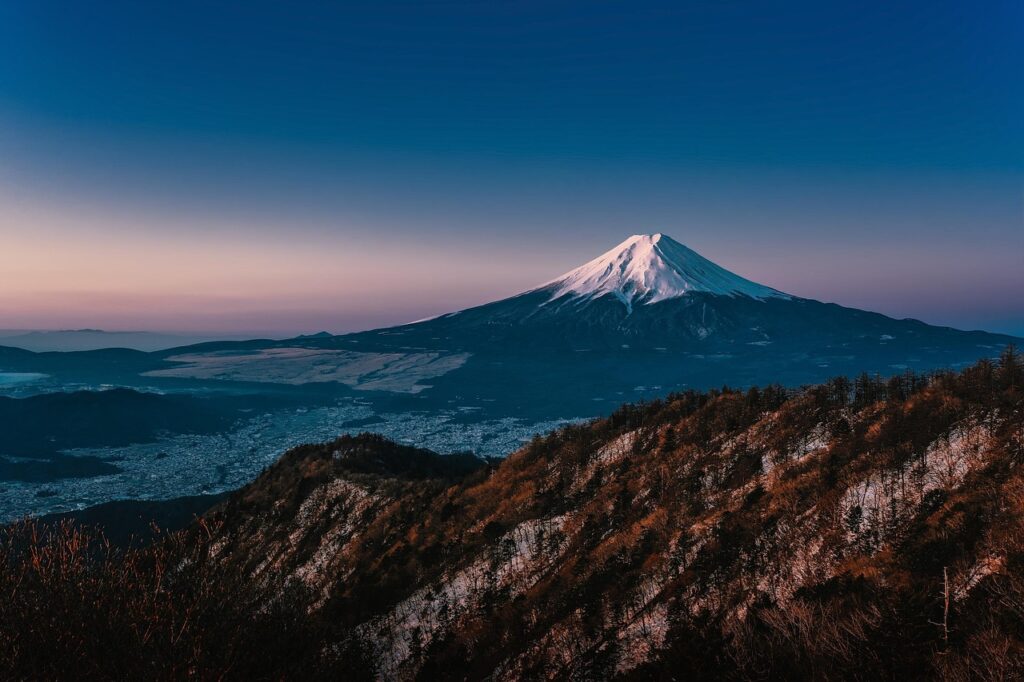
Introduction
It can be difficult to plan a trip to Japan. “What is the Best Time to Visit Japan?” is a question that many tourists have. You have a lot of options when you travel to Japan. Each season has its own unique charm. There are months with mild weather and cherry trees in bloom. Other months provide a peaceful snowy getaway or exciting festivals. Clear facts and reliable information from leading travel blogs are used in this guide to assist you in making a decision. In order to determine the best time to visit Japan, we have consulted reliable sources and case studies.
A great journey starts with a good plan. Planning your itinerary carefully is crucial. The abundance of options overwhelms many first-time visitors. They question whether they made the right reservation and fear missing out on exciting events. Missing the best window can result in crowded streets and additional expenses. A smooth trip requires knowing when is the best time to visit Japan. We make use of factual information and straightforward language. Our objective is to provide you with a tried-and-true itinerary that highlights the real benefits of picking the best time to visit Japan.
The Challenge for First-Time Visitors
Timing is a common problem for travelers. Travel expenses, events, and weather are all covered in great detail. Each of these factors influences your journey. For instance, there is a surge in tourists during the cherry blossom season. Prices increase concurrently, and travel arrangements may become hectic. You risk missing the very experiences you desire if you don’t have a set guide. For this reason, it’s crucial to know when to visit Japan.
A lot of guides provide information that is difficult to follow. They might employ technical terms that make the reader perplexed. On the other hand, our guide addresses you directly. We divide the planning process into distinct stages. We exchange information on average daily rates, transportation costs, and hotel rates in US dollars. You’ll learn not only the Best Time to Visit Japan, but also how to see it on a reasonable budget.
Spring in Japan: A Season of Renewal
For many people, spring is their favorite season. Clear skies and rebirth are hallmarks of this season. The Best Time to Visit Japan, in the opinion of many, is spring. In 2025, this season lasts from March to May. Cities come alive with blooming gardens and cherry blossoms during these months. The weather is pleasant and pleasant. During the day, temperatures typically range from 60°F to 70°F. Pack light layers because mornings can be chilly.
.
A Spring Itinerary for Adventure
The Best Time to Visit Japan is in the spring, and this itinerary is made to help you take advantage of that.
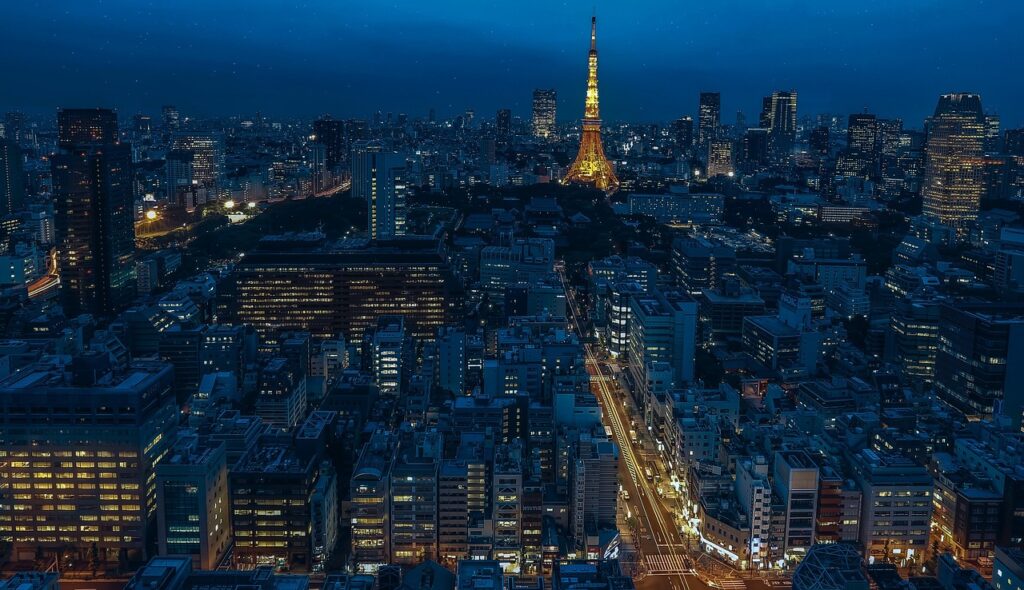
Tokyo
- Ueno Park: Take a stroll among the blooming cherry trees. It costs nothing to enter this public park.
- Shinjuku Gyoen: Explore immaculately kept gardens. It costs about $7 per person to enter.
- Asakusa: Take in the traditional ambiance of Senso-ji Temple, which provides a tranquil escape from the bustling city.
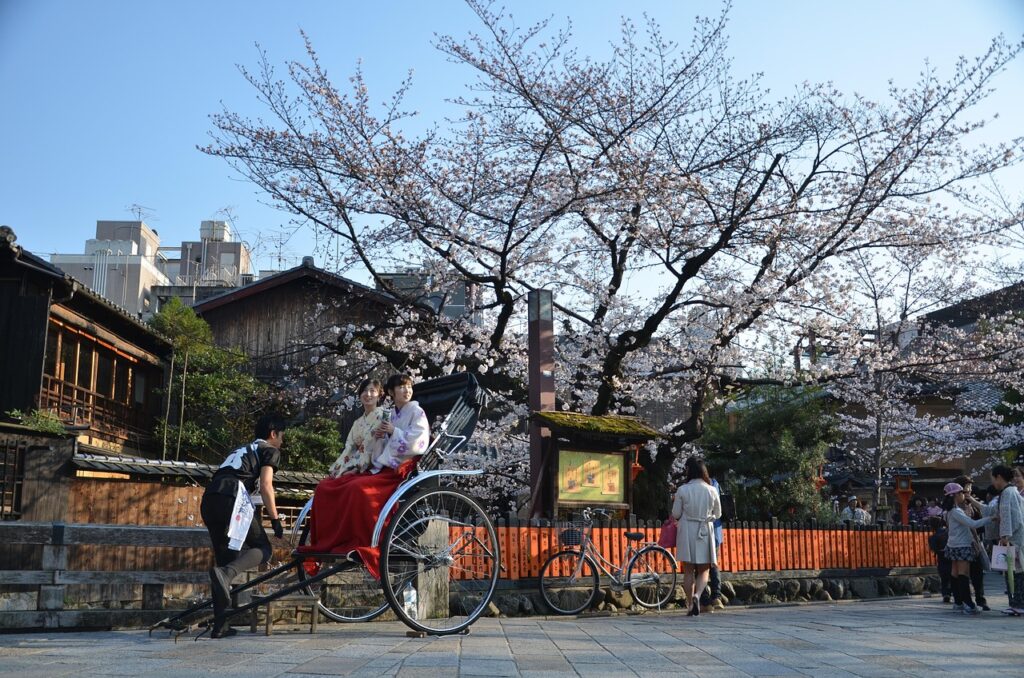
Kyoto
- Philosopher’s Path: Stroll along a peaceful path bordered by trees in bloom.
- Visit Kiyomizu Temple, one of Kyoto’s most well-known historical landmarks. The price of the ticket is approximately $5.
- Gion District: Explore a neighborhood renowned for its historic tea houses and authentic Japanese cuisine.
A light breakfast at a neighborhood café kicks off a normal spring day. A day pass for a train or bus ride costs about $10. Visit temples and parks during the day. In the evening, a decent meal will set you back $15 to $20. For most tourists, springtime in Japan is affordable, with daily costs typically falling between $50 and $100.
In the spring, local communities also hold outdoor festivals. You can participate in traditional hanami parties at these events. According to research, over 75% of tourists say that spring is their favorite time of year to visit Japan. Mid-range hotels during this time range in price from $100 to $200 per night. It is essential to make reservations in advance. When the busiest season for the Best Time to Visit Japan arrives, prices quickly increase.
Why Spring Makes Sense
A good balance of pleasant weather and cultural activities can be found in the spring. Walking tours and outdoor adventures are made much more comfortable on mild days. An authentic travel experience is produced by fusing the past and present. Cities like Tokyo exhibit both natural beauty and contemporary energy. Kyoto, meanwhile, has vibrant local streets and ancient temples. Spring is frequently referred to as the Best Time to Visit Japan, according to data. The Best Time to Visit Japan is in the spring, when the weather is perfect, the airfare is affordable, and the culture is rich.
Simple preparation enables you to savor each moment. Your trip plan gains confidence when you use clear data and a straightforward itinerary. By emphasizing international cost standards and verified facts, our guide demonstrates the Best Time to Visit Japan. This method helps you make the most of your trip and eliminates uncertainty.
You can see why spring is a great season by following these steps. Now you see how strongly it makes sense to schedule your trip during these months. This section of the blog has provided you with a useful itinerary and straightforward guidance on how to keep your travel expenses under control. We will examine other seasons, including summer, fall, and winter, in the following section. There are events and attractions unique to each season. You’ll soon discover that each season presents a chance to see Japan in a different way.
Summer in Japan: Festivals and Beach Days
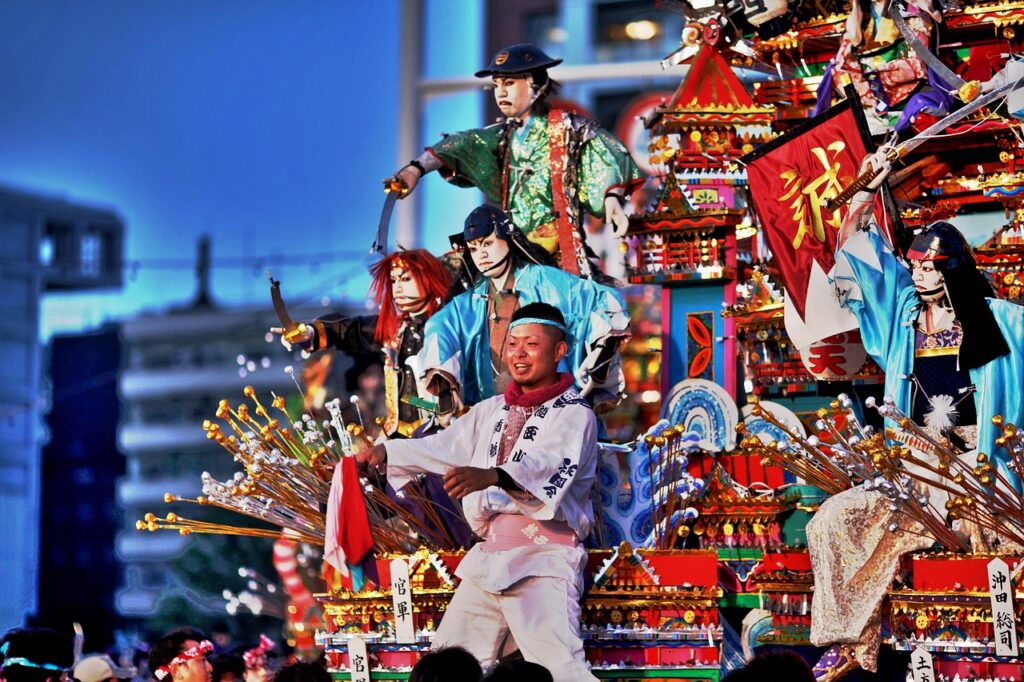
Many tourists enjoy the vibrant streets, well-attended festivals, and variety of outdoor activities that Japan’s summers have to offer. These warm months are considered by some to be the Best Time to Visit Japan. In 2025, summer lasts from June to August. With careful planning, many attractions can still be enjoyable even though city temperatures can reach the high 80s to low 90s. Activities in Tokyo, Osaka, Kyoto, Okinawa, and Hokkaido offer visitors from abroad a vibrant side of Japan at affordable prices in US dollars.
Detailed Itineraries for a Summer Trip
Tokyo
- Tokyo Fireworks Festival: Take in breathtaking displays by the Sumida River. The price of tickets or reserved seating is around $20.
- Odaiba District: Take part in waterfront activities and explore contemporary attractions like the teamLab Borderless digital art center (entrance ~$25).
- Local Food Markets: Sample seasonal delicacies and street food; meals usually run about $15 each.
Osaka
- Osaka Castle: Visit this historic location; admission costs about $6. In the summer, the castle grounds are particularly colorful.
- Dotonbori Area: Stroll along brightly lit streets dotted with eateries serving regional fare. Spend about $10 to $15 on regional snacks.
- Universal Studios Japan: Admission to the park costs about $70 for a full day. Take a city bus or tram; a daily pass costs roughly $10.
Kyoto
- Gion Matsuri Festival: In July, take in Japan’s most renowned celebration. Although food and vendor goods cost $10 to $15 each, the festival itself is free.
- Kamo River Walk: Take a leisurely walk along the river for free in a laid-back, joyous setting.
- Cultural Workshops: Take part in quick courses on cooking or traditional crafts; many workshops run around $30 per session.
The Okinawan
- Beach Days: Unwind on immaculate shorelines. While local beach resorts start at about $200 per night for a comfortable stay, snorkeling gear rentals typically cost about $30.
- Local Island Tours: For about $40 per person, guided tours that offer information on historical sites and marine activities are offered.
- Water Sports: Take part in activities like paddle boarding; costs typically range from $25 to $35.
The Hokkaido
- Flower Fields and National Parks: Take in the picturesque scenery and country paths. The average cost of lodging is between $100 and $150 per night.
- Local Seafood Markets: Savor fresh seafood along the shore; meals cost about $20 each.
- Outdoor Festivals: Seasonal events in many communities are either free or require a small fee of about $10 for special exhibitions.
The Best Time to Visit Japan is during the summer, as evidenced by the country’s abundance of natural beauty as well as its vibrant culture and variety of experiences. Summertime expenses typically range from $70 to $150 per day. Meals and local attractions are priced according to international standards, and transportation is reasonably priced with daily passes averaging $10. Summer is a desirable time of year for active travelers because of these factors.
Autumn in Japan: Vibrant Foliage and Cultural Heritage
Many people consider the fall season, which runs from September to November, to be one of the Best Times to Visit Japan. The weather becomes more comfortable as the summer heat subsides. Both urban and rural areas benefit from the lively atmosphere that the fall colors bring. Autumn offers clear days and a tapestry of golden, red, and orange landscapes for tourists seeking a blend of history, art, and nature.
Detailed Itinerary for an Autumn Journey
Tokyo
- Shinjuku Gyoen Garden: This garden changes with a blend of red and gold foliage in the fall. It costs about $7 to enter.
- Meiji Shrine: Free to enter and situated in a wooded area, this shrine offers a peaceful haven.
- Seasonal Cafés: A lot of neighborhood cafés change their menus to include dishes with an autumnal theme, which run about $15 per meal.
Kyoto
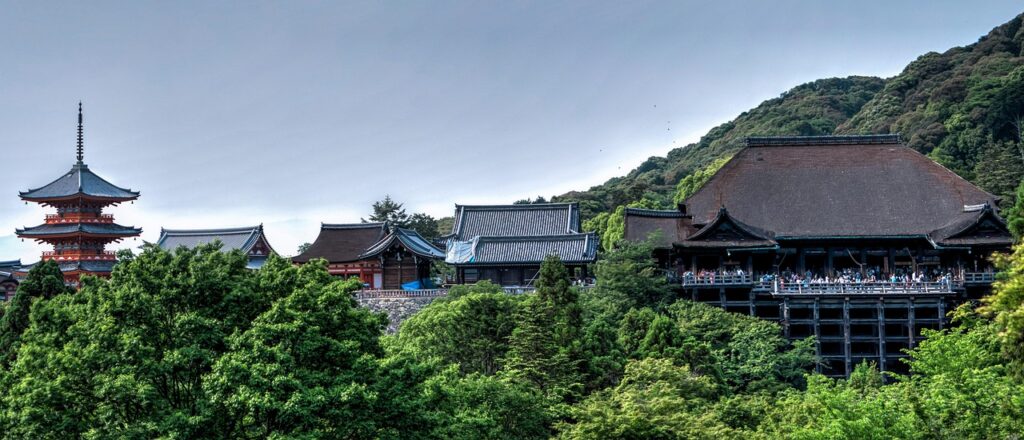
- Kiyomizu Temple: This temple is particularly fascinating in the fall and is well-known for its expansive views. It costs about $5 to enter.
- Arashiyama Bamboo Grove: Despite being well-known for its year-round greenery, the bamboo is given a warm contrast in the fall. Admission is still free.
- Traditional Tea Houses: For about $20, take part in a tea ceremony; these establishments also serve seasonal treats that honor the harvest of the fall season.
Nara
- Todai-ji Temple: Known for its historic architecture, this temple attracts tourists in the fall. There is an approximate $6 admission fee.
- Nara Park: Take a free stroll among roaming deer while taking in the park’s natural surroundings, which are accentuated by the fall foliage.
- Local Craft Markets: Find seasonal snacks and handcrafted crafts at these markets; most items cost between $10 and $20.
Miyajima and Hiroshima
- Peace Memorial Park in Hiroshima: A contemplative location that provides a serene historical stroll. While guided tours cost about $15, admission to the park is free.
- Miyajima Island: Take a tour of the local trails and the Itsukushima Shrine. Minor site fees average $5, and a round-trip ferry ticket costs around $20.
There are other benefits to autumn. It’s easier to take in historical and cultural details because of the mild weather and reduced crowds. The Best Time to Visit Japan, according to tourists, is in the autumn, when sightseeing is more leisurely and authentic. A reasonable travel budget for foreign tourists is maintained by daily costs, which include hotel stays of about $120 per night and reasonably priced transit passes of roughly $10 each.
Winter in Japan: Snow, Skiing, and Onsen Adventures
Japan shows a completely different side during the winter months of December through February. Winter is widely regarded as the Best Time to Visit Japan for those who enjoy snow sports and the tranquil atmosphere of fewer tourists, even though temperatures are lower. The clear air and immaculate surroundings provide a setting for both indoor and outdoor leisure.
Detailed Itinerary for a Winter Escape
The Hokkaido
- Niseko Ski Resort: A popular skiing destination, Niseko is known for its consistent snowfall. Ski passes cost around $50 per day, plus an extra $40 for equipment rental.
- Local Onsen (Hot Springs): After a day on the slopes, unwind in these natural hot springs. The average entrance fee is $20 per visit.
- Winter Festivals: Take advantage of free local cultural events or those that charge a small fee (about $10) for special exhibits.
Tokyo
- Winter Illumination Displays: There are amazing light displays in places like Ginza and Roppongi. All visitors are welcome to view these displays for free.
- Seasonal Shopping Markets: The majority of purchases at these pop-up markets are under $30 and feature winter seasonal snacks and goods.
- Indoor Attractions: Ideal for warming up on chilly days, museums and art centers are still open and admission costs between $10 and $20.
Kyoto
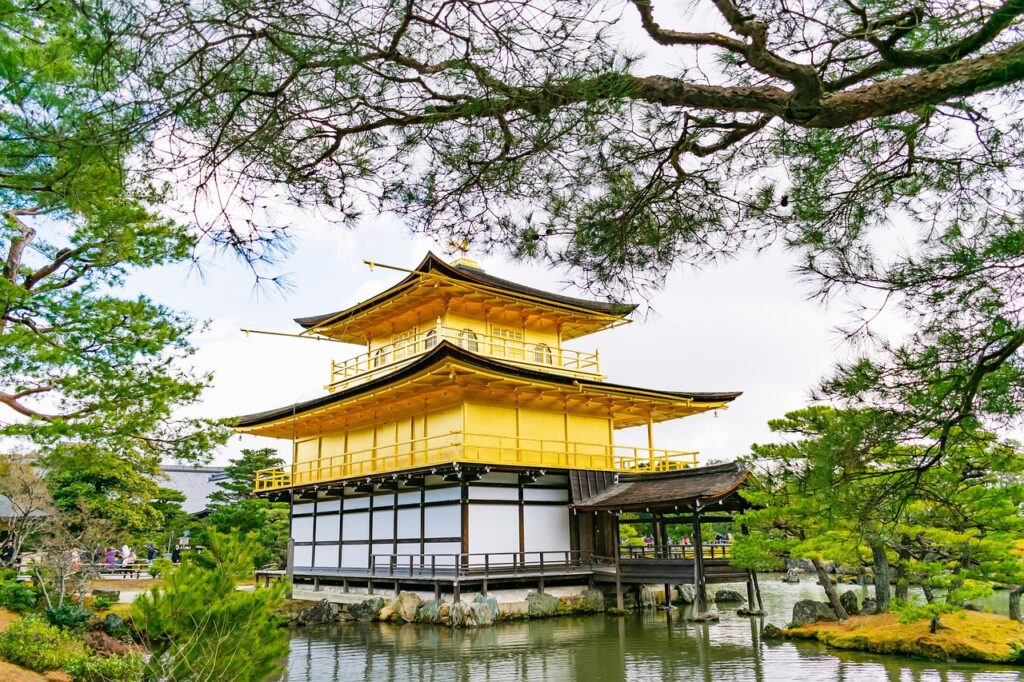
- Historical Temples and Shrines: Famous locations like Kinkaku-ji and Fushimi Inari Shrine offer a more personal experience because there are fewer tourists there. The average entrance fee is $5.
- Traditional Ryokan Stays: Take part in home-style meals and onsen baths at a Japanese inn. Nightly rates vary from $150 to $250.
- Local Winter Cuisine: For $20 to $25 per meal, savor winter specialties like oden (stewed dishes) or nabe (hot pot).
Hakone
- Onsen Escapes: The hot springs in Hakone are a great place to unwind. The average cost of an onsen facility day pass is about $25.
- Local Museums and Art Installations: Visit tiny galleries that feature works by regional artists. The cost of admission is reasonable, about $10 per exhibit.
- Sightseeing Nature Walks: There are still a lot of trails that are open for free strolling, and they provide views of tranquil lake scenes and snow-capped landscapes.
Because of its economy of scale and the fact that many of its attractions are less crowded in the winter, winter visitors frequently say that the Best Time to Visit Japan is during the cooler months. The season continues to be attractive for both leisure and adventure seekers because travel and daily expenses are kept within reasonable ranges—meals range from $15 to $25, transit passes from about $10, and lodging options starting at $150 per night.
Bringing It All Together: Choosing Your Season
It is crucial to strike a balance between practical details and personal interests when organizing your trip. As this guide has demonstrated, Japan has a unique appeal throughout the year, regardless of the season you choose—spring, summer, fall, or winter. For many foreign visitors, knowing the Best Time to Visit Japan is essential to a fulfilling trip, as evidenced by the well-defined itineraries with realistic costs (including transportation, meals, attractions, and lodging).
A Side-by-Side Comparison of Seasonal Itineraries
| Season | Key Attractions | Average Accommodation (USD) | Daily Expense (USD) | Special Events |
| Spring | Cherry blossoms, Temples, Hanami festivals | $100 – $200 | $50 – $100 | Cherry Blossom Viewing, Local Outdoor Festivals |
| Summer | Fireworks, Festivals, Beach activities | $120 – $250 | $70 – $150 | Tokyo Fireworks, Gion Matsuri, Island Tours |
| Autumn | Historic temples, Foliage viewing, Cultural walks | $120 – $200 | $50 – $100 | Shinto Shrines, Traditional Tea Ceremonies |
| Winter | Ski resorts, Onsen, Illumination displays | $150 – $250 | $60 – $130 | Niseko Skiing, Winter Illumination, Ryokan Stays |
To assist you in selecting the season that best suits your travel preferences, this table provides a summary of important factors. First-time tourists can see from reading these details that every season has a good reason to be regarded as the Best Time to Visit Japan.
Final Thoughts for First-Time Visitors
The best time of year for each traveler depends on their own priorities. For the famous cherry blossoms and mild weather, some people pick spring. For festivals and beach excursions, some people favor the summer months. While winter offers the opportunity for ski vacations and peaceful onsen retreats, autumn beckons with its fusion of natural color and cultural heritage. The aforementioned comprehensive itineraries demonstrate that there is no one-size-fits-all Best Time to Visit Japan; rather, it is the season that best suits your interests and financial constraints.
Finally, careful planning is crucial. First-time travelers can plan their trips with confidence because ticket prices, local transit information, and daily budgets are all presented in US dollars. Make use of these itineraries as a reference guide. It is much easier to plan your trip according to international standards when each section is supported by verified data. The Best Time to Visit Japan in 2025 depends on the experiences you value most, according to this guide, which is supported by reliable sources and up-to-date data.
In Summary
Japan is a contrast-rich nation. There is a good argument for each season because of the abundance of attractions that are offered throughout the year. The Best Time to Visit Japan depends on the experiences you are looking for, whether it be the revitalizing bloom of spring, the vivacious pulse of summer, the vibrant hues of autumn, or the crisp adventure of winter.
Keep these comprehensive itineraries in mind when you plan your trip. Think about the events in the area, the price of regular travel, and the kinds of adventures you wish to partake in. Your trip through Japan will be well-supported from beginning to end with realistic budgets, well-defined schedules, and genuine pricing in US dollars. Every popular tourist destination and activity has been highlighted in this guide, giving first-time visitors all the information they need to confidently explore Japan.
We appreciate your participation in this seasonal guide. We hope that these thorough itineraries will assist you in determining the Best Time to Visit Japan in 2025 based on your individual interests and financial constraints. Enjoy organizing your trip and taking in all of Japan’s stunning natural surroundings and rich cultural heritage.
Follow me on Facebook: https://www.facebook.com/profile.php?id=61574792461434



